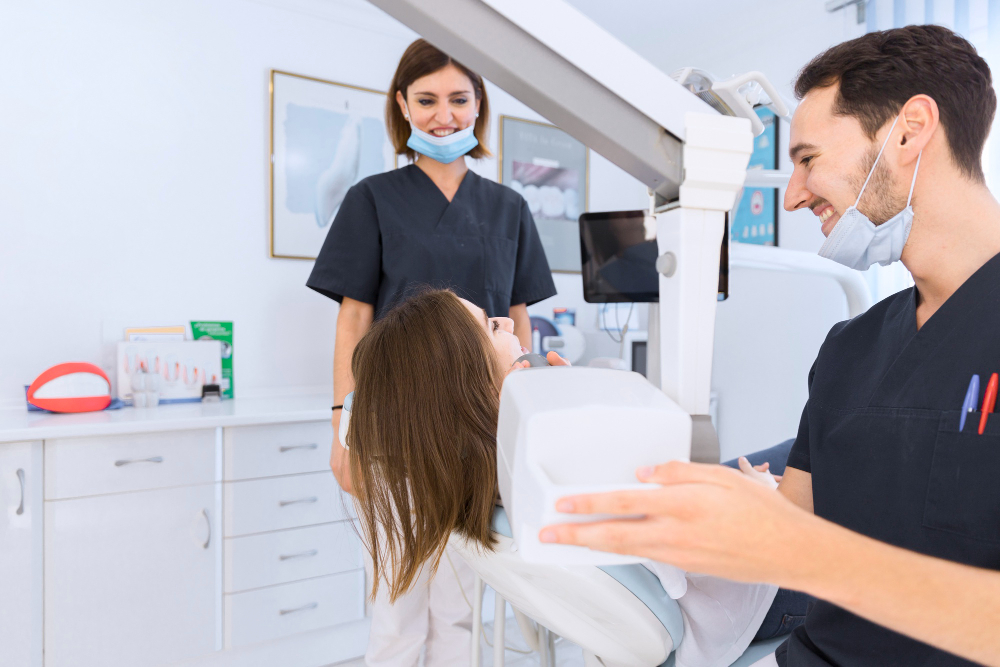구강위생 연구 번역(한국어 원본)Objective: 본 연구는 잇솔질 행태와 흡연의 유무에 따른 구강위생관리능력(Patient Hygiene Performancet: PHP)지수를 파악하여 잇솔질 행태와 흡연의 유무가 구강위생에 미치는 영향을 분석하기 위하여 연구를 하였다.
Method: 본 연구는 2012년 3월부터 7월까지 K대학 치위생과 치면세마실습실을 방문한 20대 남성 203명을 대상으로 잇솔질 행태와 흡연에 대한 설문조사와 구강위생관리능력(PHP)지수를 측정하였으며 자료분석은 SPSS WIN12.0을 이용하였다.
Results: 1. 전체 대상자의 PHP index는 평균 2.66 ‘불량’ 수준으로 나타났으며 일반적인 특징에 따른 PHP index는 흡연, 음주, 운동이 통계적으로 유의성을 나타냈다(p<0.05). 흡연의 유무는 각각 2.88, 2.47로 흡연자가 높았으며 음주의 유무는 각각 2.74, 2.50로 음주자의 PHP 지수가 높았다. 운동의 유무는 각가 2.91, 2.53로 운동을 하는 대상장가 PHP 지수가 높게 나타났다. 2. 잇솔질 행태에 따른 PHP지수는 잇솔질 빈도, 잇솔질 시간이 유의성을 나타냈다(p<0.05). 잇솔질 빈도는 빈도가 높을수록, 잇솔질 시간은 길수록 PHP지수가 낮아졌다. 3. 흡연 유무에 따른 잇솔질 행태의 PHP 지수는 흡연자가 비흡연자에 비해 PHP지수가 높게 나타났으며 비흡연자인 경우는 잇솔질 빈도, 잇솔질 방법, 잇솔질 소요시간이 유의성을 나타냈다(p<0.05). 잇솔질 방법은 ‘위아래로 닦는다’가 2.19로 가장 낮았으며 ‘옆으로 닦는다’가 3.00으로 가장 높게 나타났다. 잇솔질 소요시간은 ≤2분 2.68, ≥3분 2.34로 시간이 길수록 낮게 나타났다. 4. 흡연자의 담배개수 수에 따른 PHP지수는 10개비 이하, 11개비 이상으로 구분하였으며 각각 2.53, 3.10으로 담배개비수가 많을수록 PHP지수가 통계적으로 유의하게 높게 나타났으며 11개비 이상인 경우는 구강위생관리능력이 ‘매우불량’으로 분석이 되었다. 5. PHP지수와 잇솔질 행태, 흡연과의 인과관계를 검증하기 위하여 잇솔질 행태와 흡연유무를 독립변수로 하고 PHP지수를 종속변수로 하여 다중회귀분석의 결과 흡연은 PHP 지수를 증가시켰으며 잇솔질 횟수의 증가와 위아래로 닦는 잇솔질 방법은 PHP지수를 감소시켰으며 각 계수 값은 모두 유의성을 나타났다(p<0.05).
Conclusion: 구강위생관리능력을 높이기 위해서는 잇솔질 빈도의 증가, 올바른 잇솔질 방법과 동시에 흡연율을 낮추어야 한다. 구강보건증진을 위한 치과위생사는 금연지도를 할 수 있는 아주 유리한 위치에 있기 때문에 치과임상에서 근무하는 치과보건인으로서 치과에 내원하는 환자에게 올바른 잇솔질 습관을 향상시켜야 하며 흡연예방을 위해서 치과에 내원하는 환자의 흡연 실태를 조사하여 흡연행태에 영향을 미치는 요인을 파악하고 진료현장에서 금연운동을 해 나가야 할 것으로 사료된다. |
구강위생 연구 번역(영어 번역본)Objective: This research apprehends the Patient Hygiene Performance (PHP) index according to smoking and tooth brushing habits, in order to analyze how those two habits influence Patient Hygiene Performance.
Method: This research uses the measured PHP index and the surveys filled out by 203 men in their 20’s who visited K university’s dental hygiene department oral prophylaxis laboratory from March to July of 2012. For data analysis SPSS WIN 12.0 was used.
Results: 1. The average PHP index of all experimented subjects was 2.66, a very poor level. The PHP index according to general characteristics, smoking, drinking, and exercise showed statistical significance (p<0.05). Smokers had a PHP index of 2.88 which is higher than 2.47 of non-smokers. Drinkers also had a higher PHP index of 2.74 than the 2.50 of non-drinkers. Finally, people that exercise had a higher PHP index of 2.91 than the 2.53 of people that do not exercise. 2. PHP index according to the frequency of tooth brushing and duration of tooth brushing showed a statistical significance (p<0.05). PHP index decreased with higher frequencies of tooth brushing and longer durations of brushing. 3. The PHP index of smokers is higher than that of non-smokers. In the case of non-smokers, the frequency, method, and duration of tooth brushing had a statistical significance (p<0.05). The tooth brushing method of brushing up and down had the lowest PHP index of 2.19 and the method of brushing sideways had the highest PHP index of 3.00. The PHP index was lower (2.34) for ≥3 minutes and higher (2.68) for ≤2 minutes. 4. The PHP index of smokers who smoke less than or equal to ten cigarettes is 2.53 and smokers who smoked more than 10 cigarettes is 3.10. Therefore, the PHP index is greater for those who smoked more cigarettes and this is statistically significant. Those who smoked more than ten cigarettes were classified as ‘very poor’ level of Patient Hygiene Performance. 5. In order to verify the causation between PHP index, tooth brushing habits, and smoking, we used tooth brushing and smoking habits as independent variables and PHP index as the dependent variable. The results of multiple regression analysis showed that smoking increased the PHP index, while the increase in tooth brushing frequency and the up and down tooth brushing method decreased the PHP index. All the coefficients were statistically significant (p<0.05).
Conclusion: In order to increase Patient Hygiene Performance there must be a decrease in smoking rate while people increase their tooth brushing frequency and use a proper tooth brushing method. Since the dental hygienist for a better oral health is at an advantageous position to practice smoking cessation counseling, as a dental hygienist who works at a dental clinic, he/she should improve the tooth brushing habits of his/her patients, survey the smoking habits of the patients, understand the factors that affect smoking and carry on smoking cessation counseling while providing medical treatment. |
